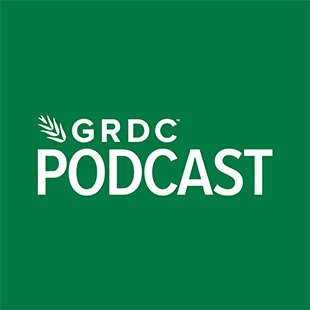Tillage systems over the last 50 years
Tillage systems over the last 50 years

-
PODCAST
- 16 Nov 2018
- | Region: National
Tillage systems over the last 50 years
More about this podcast
Fifty years ago, the pioneers of zero and minimum tillage cropping systems had a challenging time to convince researchers and growers that these systems had benefits over a tractor and plough criss-crossing a paddock, but in 2018 the conservation farming methods are widely used across Australia.
Associate Professor David Freebairn from the University of Southern Queensland in Toowoomba grew up on a farm in NSW where cropping country was cultivated and stubble burnt every year.
As a University graduate, his first research task was to assess the impact on soil erosion of not cultivating and not burning stubble. David admits to thinking 'This won’t work', but he was amazed when rainfall simulators on different soils with different cover returned the same result every time – a significant reduction in erosion.
David has reviewed the past 50 years of research into zero and minimum till practices, since the 1960s when there were two different mindsets – the traditional method of burning stubble to reduce disease and make it easier to plant the next crop, and the idea of leaving it on the surface to protect the soil and retain water.
Catchment studies looking at water storage, erosion and runoff showed quite early the dramatic impacts of retaining stubble. One study had reduced a soil loss of 50 tonnes/ hectare/ year down to 6t/ha/yr if stubble was mulched, and 1t/ha/yr if it were zero till.
The challenge was to make the method easy to practice. At the time there were no minimum till machines on the market to plant directly into stubble, and very few herbicides. Roundup® entered the market in 1974 but cost $20/litre, and at that time growers were using 1-2L/ha.
In 1969, Hector Tod was one of the early farmers to explore tillage and planting equipment to handle higher stubble loads. Machinery evaluation programs, testing equipment imported from Canada and the US, were initiated in Queensland in the mid 1970s.
In 1968 a study started at Warwick in southeast Queensland that provided more support for conservation farming methods. It clearly showed that where there was less tillage or no tillage and stubble retained, there was an extra 30-50mm of stored water for the crop in most years.
This should have converted to extra yield, but the extra water resulted in poorer mineralisation of nitrogen into sowing, translating as lower protein and lower yields. And there was an accumulation of foliar and root diseases which got in the way of maximising the improved water capture.
From 1968-90 researchers initiated the breeding of nematode-resistant varieties.
In response to root diseases, the NSW Department of Agriculture decided to trial no till in tandem with the rotation of other crops like sorghum and pulses to follow a winter cereal.
The yield response was dramatic. The extra water was used by the rotational crop, the disease pressure was less, and yields improved by half a tonne to a tonne per hectare.
The machinery followed suit.
So should growers fear the return of cultivation? The occasional working of a no till paddock may bring new weed seeds into action, but it won’t destroy 10 years of hard work, David says.
From his review of 50 years of conservation farming, he advises growers who are still sceptical to start small and experiment.
Further information
Associate Professor David Freebairn
National Centre for Engineering in Agriculture (Research)
University of Southern Qld, Toowoomba, Qld.
0408 876 904
david.freebairn@usq.edu.au
